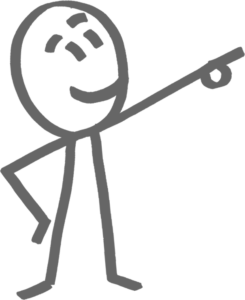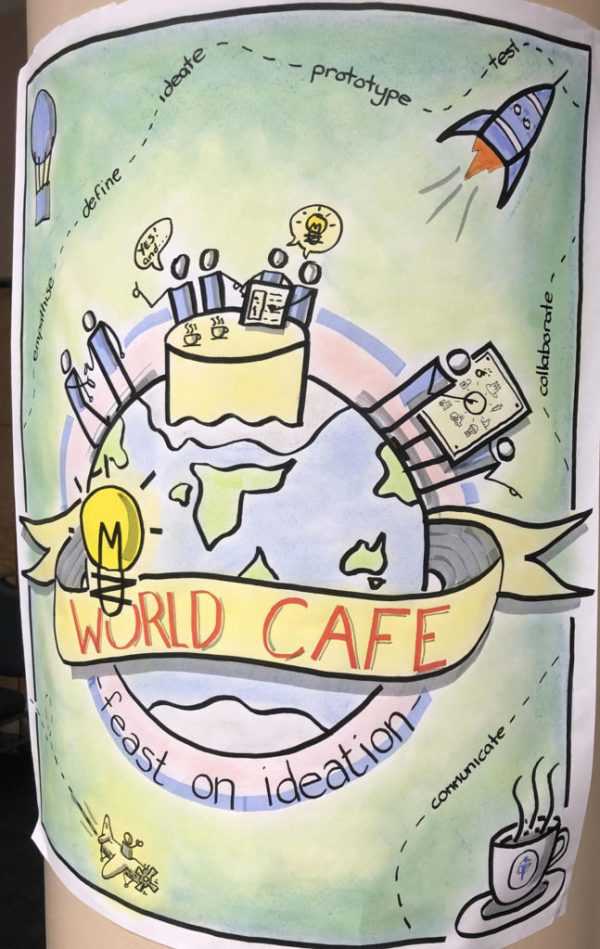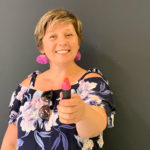









Project Manager, Information Systems
The night before his meeting, Alan decided to turn three pages of heavy text into visuals. “When you are trying to present to stakeholders, they see the final result but often unaware of the process. I felt we needed to allow the stakeholders to empathise with the human aspect of the project and show how we came to these conclusions. Telling them simply wouldn’t be enough.”
![]() The benefits of the The benefits of the Visual Coaching program were fantastic, it gave me a lot of confidence. I’d usually spend hours trying to perfect my work, but the program taught me to be more spontaneous and trust myself. I’m not making a Mona Lisa here. It’s about capturing key messages, not creating a work of art.is program were fantastic, it gave me a lot of confidence. I’d usually spend hours trying to perfect my work, but the program taught me to be more spontaneous and trust myself. I’m not making a Mona Lisa here. It’s about capturing key messages, not creating a work of art.
The benefits of the The benefits of the Visual Coaching program were fantastic, it gave me a lot of confidence. I’d usually spend hours trying to perfect my work, but the program taught me to be more spontaneous and trust myself. I’m not making a Mona Lisa here. It’s about capturing key messages, not creating a work of art.is program were fantastic, it gave me a lot of confidence. I’d usually spend hours trying to perfect my work, but the program taught me to be more spontaneous and trust myself. I’m not making a Mona Lisa here. It’s about capturing key messages, not creating a work of art.
After a trip to K-mart to get a new sketch pad, Alan decided that the story could not be shown as steps on separate pages, it needed to flow. Alan diverted his attention to a roll of plotting paper, unrolled a section on the family’s small living room floor and began to draw. For the next few hours he kept adding icons and text. Only when he took the poster to another room for colouring and unrolled it, he realised it was five meters long. “I wasn’t sure if the meeting room we booked was big enough to display it”.
His teammates, the facilitators, the clients were amazed when they saw this work. “I think I surprised myself too.” It took Alan over four hours to create his largest sketch but the result was worth it. The poster helped the team to prove the concept of work and persuade the stakeholders in the importance of the project to help secure resources and funding.
![]() That’s the power of visual facilitation.
That’s the power of visual facilitation.
“It enabled the people we were talking to, to understand not just the concept but how we came up with it. It gave the stakeholders a really good understanding of the story behind it. That’s the power of visual facilitation. You don’t have to sit there and read, you don’t have to be told, the visual is filling the gap for you.”

The ‚giving’power of Visualisation
Alan Kurrle

Alan feels visualisation helped humanise the project. “From my perspective, we needed to illustrate people’s feelings, to put some empathy in there. The poster captured our “why” – we are in the medical profession to care for the patient.”
Alan first came across bikablo® at one of the workshops, where he saw our Melbourne trainer John Hibble scribe. It looked impressive, and Alan wanted to give it a go. “I believe you need to keep yourself challenged in different areas. I love learning new things.”
The tagline “everyone can draw” really appealed. A visual person, Alan always felt he lacked skills to express his ideas on paper.
Alan attended two-day Bikablo® Fundamentals course in October 2018. He absolutely loved it and wanted to continue practicing but felt life got in the way. No longer feeling confident, Alan saw Visual Friends’ ad for a new, online Visual Coaching program and jumped right in.
“The benefits of the Visual Coaching program were fantastic, it gave me a lot of confidence. I’d usually spend hours trying to perfect my work, but the program taught me to be more spontaneous and trust myself. I’m not making a Mona Lisa here. It’s about capturing key messages, not creating a work of art.”
Alan found the small group of six a perfect size and the Slack channel a great way to share and learn from each other. “The program challenged us and kept us accountable.”
Alan’s five-meter poster was the result of this newly found confidence. He couldn’t be more pleased.
Alan is very passionate about his work, a big part of which is transforming hospitals into more human places. Under his management, his workplace is the second hospital in Australia to introduce a la cart room service for patients, where meals are individually cooked to order. He feels fortunate to be in a position to make a difference and happy these new skills help facilitate this.
“I’m lucky to be employed in a person-centric workplace. Our customers, the patients are right outside of our offices. It’s all about constantly improving the service we can provide, what experience we can change to actually make a positive difference to people. I want to continue to practice my skills as a part of my role. I plan to use it to visualise the strategic purpose and vision within my departments, so my team is able to be reminded of our direction every time they pass by.”
Alan is still adamant that he’s not good at drawing.
“I still maintain that I cannot draw, but what I can do is use basic shapes to create a visual. By choosing basic shapes and putting them together I can represent what I’m trying to say rather than replicate it.”

The article was written by Natalia Tsygankova. Natalia has always loved words and talking to people. She has put that passion to good use and has been sharing people’s stories in the community radio, TV and print media for the last 10 years. Natalia is also a big fan of true storytelling events and regularly volunteers at the most famous one – The Moth, interviewing the winner. You can hear her own story of moving to Australia from Russia in 1999 here. Natalia believes that everyone has a story – So what’s yours? Contact her today to share your story.

